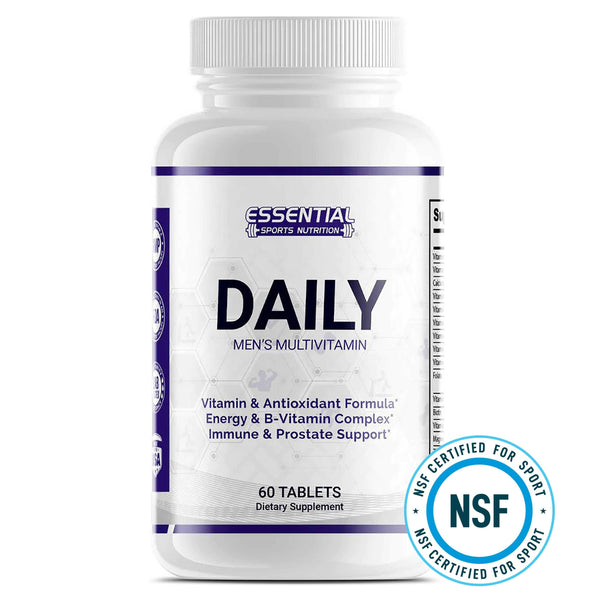Exercises for Knee Pain: Stretches and Exercises
When your knees start to whisper their grievances during your daily activities, it's crucial to listen closely before they start to shout.
You've likely heard that exercise can be a soothing balm for these common joint complaints, but diving into a routine without guidance might do more harm than good.
As you stand at the crossroads of discomfort and the pursuit of relief, understand that the right exercises can help reinforce the muscles around your knee, providing the support your joints crave. You'll find that targeted movements can not only alleviate some of the strain but potentially improve your knee's overall function.
However, the path to knee relief isn't a one-size-fits-all journey, and it's essential to tailor your approach to your body's unique needs. Stick around, and you'll discover how to navigate this path with a careful blend of strength, flexibility, and caution—ensuring your steps towards recovery are as informed as they are gentle.

Key Takeaways
You now have powerful tools to help reduce knee pain. Mixing warm-ups, gentle cardio, muscle strengthening, and stretches means you're taking control of your pain. It's not just about feeling better for now; it's about making your knees stronger for the future.
Boosting Knee Health
Each time you stretch or do a squat, think of it as a step towards less pain and more robust knees. It's like making a new friend who's always there to support you. With consistent exercise, your knees can become dependable supports for your body.
Understanding Knee Pain
To effectively manage your knee pain, it's crucial to pinpoint its origin, be it from overuse, an injury, arthritis, or muscular imbalances. The knee joint is a sophisticated structure that bears a substantial amount of stress during daily activities. Factors like your age, weight, and activity levels can influence the health of your knees and may increase the likelihood of discomfort.
Understanding the biomechanics of the knee joint is key. It's how you identify what's causing your pain and develop a strategy to address it. If you're dealing with overuse or an injury, rest and appropriate exercises can help with knee rehabilitation. Arthritis, on the other hand, may require a different approach, focusing on managing inflammation and maintaining joint mobility.
Strengthening the muscles around your knee is essential. It's not just about reducing current pain; it's also about preventing future issues. Exercises that target these muscles can alleviate the strain on your knee joint and cause pain to diminish. It's important to note that these exercises should be performed correctly and consistently for the best results.
Don't hesitate to seek medical advice to ensure that your approach to managing knee pain is both safe and effective.
Warm-Up Stretches
Before diving into your workout, warm-up stretches serve as the essential foundation, ensuring your knee muscles and joints are primed and ready to perform at their best. To prevent muscle pain and injury, begin with dynamic movements that enhance your flexibility and range of motion. These stretches and exercises are designed to increase blood flow and prepare your body for the demands of your physical routine.
Focus on stretches that target the muscles surrounding your knees. Start with a gentle march in place, slowly raising each knee in a controlled manner, then gradually increasing the height and speed as your muscles warm up. This prepares your joints for movement and helps to lubricate them.
Next, perform leg swings to further enhance range of motion. Stand sideways near a wall for support and slowly raise one leg to the side, then cross it in front of your body. Repeat this motion in a steady rhythm, being mindful not to overextend your knee.
Lastly, incorporate ankle circles and gentle squats, making sure to slowly lower your body without allowing your knees to travel beyond your toes. This will ensure your knee joints are sufficiently warmed up, reducing stiffness and preparing them for more strenuous exercises.
Low-Impact Cardio Options
If you're dealing with knee pain, low-impact cardio options can be a game-changer for maintaining your fitness.
Swimming offers joint relief by providing resistance without the harsh impact, making it an ideal exercise for knee rehabilitation.
Incorporating an elliptical machine or stationary cycling can further enhance cardiovascular health while protecting your knees from unnecessary strain.
Swimming for Joint Relief
Diving into the pool for a swimming session can offer you significant relief from knee pain, as this low-impact exercise supports your joints while providing a comprehensive cardiovascular workout.
Swimming is an excellent choice among Types of Exercise for Knee Pain because it allows you to engage in strengthening exercises without having to bear weight on your joints. Here's how swimming can help prevent and treat knee discomfort while helping to improve your movement:
-
Buoyancy Benefit: Water buoyancy means less stress on your knees, making it easier to move and exercise.
-
Full Range of Motion: Swimming encourages the use of your full range of motion, which can enhance joint flexibility and strength.
-
Endurance and Strength: Regular swimming increases endurance and muscle strength, supporting knee joint health.
Elliptical Machine Benefits
While swimming offers excellent joint relief, the elliptical machine is another low-impact cardio option that effectively reduces knee stress while providing a robust cardiovascular workout. Its design mimics natural walking and running movements without harsh impact, safeguarding your knees from additional strain. With adjustable resistance levels, you're in control, tailoring the intensity to match your comfort and fitness goals.
Including the elliptical in your exercises can strengthen muscles supporting the knee, enhancing flexibility and endurance. The added bonus of upper body engagement through handlebars ensures a comprehensive workout. Your physical therapist may recommend alternating between forward and reverse motions to engage different muscles, which promotes balance and minimizes repetitive stress on your knees, optimizing elliptical machine benefits for your knee pain relief strategy.
Stationary Cycling Techniques
To alleviate knee pain and improve joint health, adjust the seat height on your stationary bike so that there's a slight bend in your knee at the lowest point of the pedal stroke. Stationary cycling techniques can be a cornerstone among exercises to help support your knee recovery journey. They offer strength and flexibility benefits that are crucial for your overall health.
Consider these pointers:
-
Use moderate resistance to avoid overstraining your knees.
-
Keep a steady pedal cadence to minimize joint impact.
-
Engage your core to maintain proper posture and alleviate unnecessary knee strain.
Strength Training for Knees
As you work on alleviating knee pain, strengthening your quadriceps is crucial; these muscles help stabilize your patella and absorb shock during movement.
Similarly, conditioning your hamstrings plays a vital role in supporting the back of the knee joint and maintaining balance with the quadriceps.
Quadriceps Strengthening Essentials
Strengthening your quadriceps is a pivotal step in alleviating knee pain and enhancing joint stability. One effective exercise is the Straight Leg Raise:
-
Lie on your back with one knee bent and the other leg straight.
-
Tighten the thigh muscles of your straight leg.
-
Slowly lift the straight leg about 6 inches off the ground, keeping your knee locked.
Hold the lift for a few seconds and then gently lower your leg back to the starting position. It's important to perform this movement in a controlled manner to maximize quadriceps strengthening.
Regularly incorporating Straight Leg Raises into your routine can significantly improve knee support and reduce discomfort.
-
Lie on your back, one knee bent
-
Tighten thigh muscles, slowly lift straight leg
-
Hold, then return to starting position
Hamstring Conditioning Exercises
While focusing on your quadriceps is essential, equally important is conditioning your hamstrings to support knee stability and function effectively. Hamstring conditioning exercises are crucial for knee pain management. These exercises help strengthen the back of your thigh muscles, which can alleviate stress on the knee joint.
Lie flat on the floor and try these focused movements:
| Exercise | Focus Area | Instructions |
|---|---|---|
| Deadlifts | Hamstrings and Glutes | Keep back straight |
| Romanian Deadlifts | Hamstrings | Hinge at the hips |
| Stability Ball Leg Curls | Hamstrings, Knee Stability | Roll ball with heels toward you |
| Nordic Hamstring Curls | Hamstring Strength, Injury Prevention | Lower body slowly |
Integrating these exercises into your routine can provide therapeutic benefits and help you manage knee pain effectively.
Flexibility and Mobility Work
To enhance your knee's range of motion and alleviate stiffness, incorporate dynamic stretches like leg swings and static stretches such as hamstring stretches into your exercise regimen. Flexibility and mobility work are essential to managing knee pain, focusing on the muscles, tendons, and ligaments that support your knee joint. By engaging in regular stretching, you can maintain or even improve the flexibility of your thigh muscles, which are crucial to keeping your leg straight and preventing movements that could be causing pain.
Consider these exercises:
-
Dynamic Leg Swings: Stand holding onto a stable surface, gently swing one leg forward and back, then side to side, to warm up your hip and thigh muscles.
-
Hamstring Stretch: Sit on the floor with one leg extended, gently lean forward until you feel a stretch along the back of your thigh.
-
Quadriceps Stretch: While standing, pull your heel towards your buttocks, keeping the other leg straight, to stretch the front of your thigh.
Balance and Stability Exercises
Building on your enhanced flexibility, it's crucial to integrate balance and stability exercises into your knee pain management routine. These exercises are designed to strengthen the muscles around your knees, improving your joint stability and reducing the risk of injury.
Start with a Single Leg Stance to challenge your balance. Stand with one leg straight and the other leg bent, keeping your thigh muscles engaged. Hold this position for 30 seconds, then switch legs. Keep your feet flat on the ground to maximize stability.
Incorporate Bosu Ball exercises to further test your balance. Standing on the unstable surface of a Bosu ball, perform squats or lunges. This not only helps with balance but also strengthens your knee-supporting muscles.
Utilize stability discs while practicing upper body exercises. These discs create an unstable surface, forcing your leg muscles to work harder to maintain balance, which in turn can alleviate knee pain.
Additionally, engage in Yoga or Pilates classes that specialize in balance and core strength. These disciplines emphasize control and stability, which are vital for knee health.
Post-Exercise Recovery Tips

After your knee-strengthening exercises, it's essential to focus on recovery techniques that can reduce soreness and promote healing. The pain caused by your workouts is a sign that your muscles, including the thigh muscles supporting your knee, are rebuilding. To help your knee recover and to stave off further knee pain, incorporate these post-exercise recovery tips:
-
Hydrate: Replenish lost fluids to aid muscle recovery. Proper hydration can make a significant difference in how you feel post-workout.
-
Nutrition: Refuel with a balanced meal. Your body needs nutrients to repair the muscles worked, especially if you're focusing on one knee due to an imbalance or injury.
-
Rest and Cold Therapy: Get adequate sleep, and consider cold therapy like ice packs to reduce inflammation and muscle soreness.
Exercises to help Knee Pain FAQs:
Q: What are some effective exercises for knee pain?
A: Some effective exercises for knee pain include straight-leg raises, hamstring stretches, squats, calf raises, and thigh strengthening exercises.
Q: How can straight-leg raises help with knee pain?
A: Straight-leg raises help strengthen the quadriceps muscles, which provide support to the knee joint and can help reduce knee pain.
Q: What are some recommended stretches for knee pain?
A: Recommendations for stretches for knee pain include the hamstring stretch, calf stretches, and quadriceps stretches to improve flexibility and reduce tension around the knee joint.
Q: What should I consider before starting an exercise program for knee pain?
A: Before starting an exercise program for knee pain, it is important to consult a healthcare professional or physical therapist to ensure that the exercises are suitable for your specific condition and to avoid exacerbating any existing issues.
Q: How many repetitions of each exercise should I do to help with knee pain?
A: It is recommended to start with 10-15 repetitions of each exercise, gradually increasing the number as your strength and endurance improve, while ensuring that you do not experience any pain or discomfort during the exercises.
Q: Can exercises help relieve knee pain caused by osteoarthritis?
A: Yes, regular exercise, including specific knee-strengthening exercises, can help relieve knee pain caused by osteoarthritis by strengthening the muscles around the knee, improving flexibility, and reducing stress on the knee joint.
Q: Are squats beneficial for knee pain?
A: When performed with proper form and technique, squats can be beneficial for knee pain as they strengthen the muscles that support the knee joint and improve overall lower body strength and stability.
Q: Can exercises help prevent knee pain in the future?
A: Yes, regular exercise, particularly strengthening exercises for the muscles around the knee, can help prevent future knee pain by improving joint stability and reducing the risk of injury or strain.
Q: What types of exercises can help with knee pain without causing further discomfort?
A: Low-impact exercises such as swimming, cycling, and specific knee-strengthening exercises can help with knee pain without causing further discomfort, as they minimize stress on the knee joint while improving strength and mobility.
Q: How can calf raises benefit individuals with knee pain?
A: Calf raises can benefit individuals with knee pain by strengthening the calf muscles, which in turn can provide better support to the knee joint and help alleviate some of the stress on the knee during activities such as walking and climbing stairs.
Other Frequently Asked Questions:
What Is the #1 Mistake That Makes Bad Knees Worse?
The #1 mistake that makes bad knees worse is ignoring the pain and continuing activities that exacerbate the condition. You're better off listening to your body; if an action hurts, stop doing it.
Rest, apply ice, and consider seeking professional advice. Ignoring these warning signs can lead to increased inflammation and damage, potentially causing more severe issues down the line.
Always prioritize your joint health to prevent further injury.
Can Knee Pain Go Away With Exercise?
Yes, your knee pain can vanish with the right exercise regimen.
Imagine your joints like rusty hinges, exercise being the oil that smooths your movements.
Evidence shows that engaging in targeted, low-impact activities strengthens the muscles supporting your knees, alleviating pain.
It's a practical approach to restoring function and preventing further injury.
Always consult a healthcare provider to tailor a therapeutic exercise plan that's safe and effective for your specific condition.
Which Exercise Is Best for Knee Pain?
You're wondering which exercise tops the list for easing knee discomfort.
It's not a one-size-fits-all answer, but generally, low-impact activities like swimming, cycling, and using an elliptical trainer are excellent choices. They strengthen the muscles around your knee, improving support without adding stress.
Remember, it's crucial to listen to your body and adjust the intensity to avoid overexertion.
Consult a healthcare provider for a tailored plan that suits your specific needs.
Should I Exercise a Sore Knee or Rest It?
You should balance rest with gentle exercise for a sore knee. Complete rest can lead to stiffness, worsening your discomfort. Instead, opt for low-impact activities that strengthen supporting muscles without straining the joint. This approach can improve flexibility and reduce pain over time.
However, if exercising increases your pain, you may need to rest or consult a professional for tailored advice. Listen to your body and don't push through sharp pain.
Getting Started
You've now equipped yourself with an arsenal powerful enough to make knee pain quiver in its tracks. By blending warm-ups, low-impact cardio, strength training, and flexibility work, you're not just managing pain—you're commanding it.
Remember, with each stretch and squat, you're not only chasing away discomfort but also ushering in a new era of knee resilience. Embrace these exercises like a trusted ally, and watch your knees transform into pillars of strength and mobility.




























